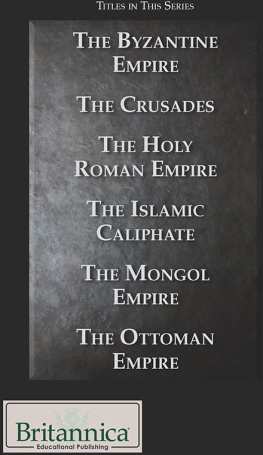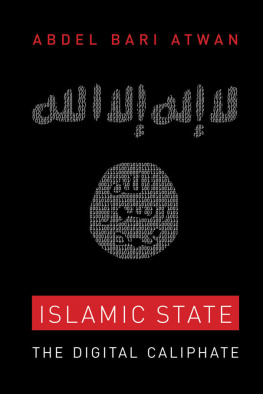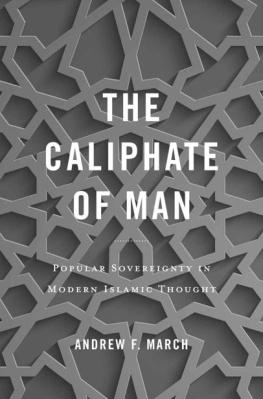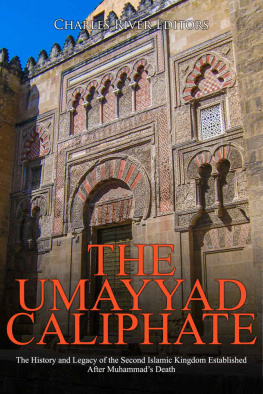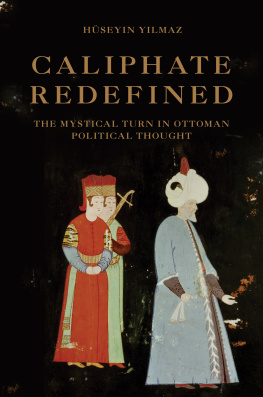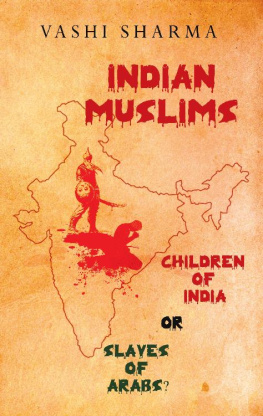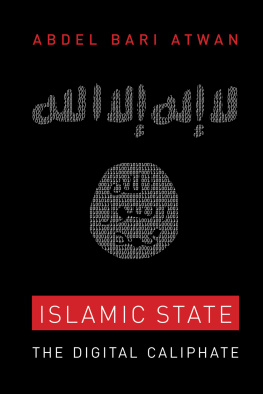Pakistan:
A Legacy of the
Indian Khilafat Movement
Husein Khimjee, Ph.D.
iUniverse LLC
Bloomington
Pakistan: A Legacy of the Indian Khilafat Movement
Copyright 2013 by Husein Khimjee, Ph. D.
All rights reserved. No part of this book may be used or reproduced by any means, graphic, electronic, or mechanical, including photocopying, recording, taping or by any information storage retrieval system without the written permission of the publisher except in the case of brief quotations embodied in critical articles and reviews.
iUniverse books may be ordered through booksellers or by contacting:
iUniverse LLC
1663 Liberty Drive
Bloomington, IN 47403
www.iuniverse.com
1-800-Authors (1-800-288-4677)
Because of the dynamic nature of the Internet, any web addresses or links contained in this book may have changed since publication and may no longer be valid. The views expressed in this work are solely those of the author and do not necessarily reflect the views of the publisher, and the publisher hereby disclaims any responsibility for them.
Any people depicted in stock imagery provided by Thinkstock are models, and such images are being used for illustrative purposes only.
Certain stock imagery Thinkstock.
ISBN: 978-1-4917-0207-9 (sc)
ISBN: 978-1-4917-0208-6 (ebk)
iUniverse rev. date: 08/28/2013
Contents
Introduction to the Khilafat Movement
The Re-Emergence of the Idea of the Caliphate in the Minds of Indian Muslims
The Beginning and the Organization of the Khilafat Movement
Indian Muslim Theorists of the Khilafat
Conclusions
This book, Pakistan: A Legacy of the Indian Khilafat Movement , is a slightly revised version of the earlier work I did in the 1990s, The Legacy of the Early Twentieth-Century Khilafat Movement in India . In the aftermath of 9/11, I find this study even more interesting. Political and other events in Pakistan, since its inception in 1947, has shown that it has been struggling to live up to the ideology for what it was created: the ideology to be a nation where its ` ulama (religious scholars) promote a true social justice, to be a nation at peace with all its citizens, to be a nation at peace with its neighbours and a nation that would reflect the era of Prophet Muhammad in Medina. There, in Medina, the Prophet established a truly pluralistic society in which all its citizens lived in peaceful co-existence with others. In Medina, under the famous Constitution of Medina the Prophet had presented, all citizens had full rights to express themselves freely and worship freely. In other words, a nation in which faith and reason went hand-in-hand, moderation always prevailed and extremism was considered hindrance to human progress. Extremism found no support. This is the model for which Pakistan was created. Such a model would have discouraged any other Muslim country or group to hijack the faith that abhors and condemns acts of violence; 9/11 and other acts of violence would not have occurred.
This book shows that the abolition of the institution of the Khilafat (Caliphate) in Turkey and the reasons given by the Turkish ulama (religious scholars) for its abolition, provided food for thought to the Muslim elite in India. Muslims saw in the reasons for this abolition a process of critical theological reasoning in which it was possible to update the institution of the Caliphate. This reflection made it possible for Muslims to demand, from the British government and the Indian National Congress, an Islamic state. This book argues that from such a development emerged the formation of a new country, the Islamic Republic of Pakistan. The carving out of a new country had all the blessings of the British government who drew the boundaries in the east and west of India giving birth to the new country. Hence, the title of this book, Pakistan: A Legacy of the Khilafat Movement in India.
The book discusses, with some evidence, how the Indian political leader, Muhammad Ali Jinnah (1876-1948), took up the challenge and used a three-pronged approach to sell the idea to the Muslim masses. After tracing earlier views of the Caliphate, this study looks at the connotations of the Ashura tragedy (the martyrdom of Imam al-Husayn, the grandson of Prophet Muhammad) in Karbala, which occurred in the year 61 A.H. (685 C.E.), and its commemoration every year, to show how recalling this event helped Jinnah in his Pakistan movement. The study shows that the khilafatist leaders were involved in using the event of the Ashura tragedy in Karbala to motivate Muslims. The study also presents writings and compositions of poems using the Ashura tragedy to arouse Muslims, literature recently released (1986) in the material proscribed by the British government in the 1920s and 1930s.
Finally, the study shows that in the thinking of twentieth-century Indian Muslims, the institutional rationale of the Caliphate seems to have evolved, from a one-man Caliph-emperor to a socially elected, democratic caliphate state, from the idea of an individual Caliph to the concept of an Islamic state.
One difficulty in thinking about writing this book has been that although the Khilafat movement in early twentieth century India was a movement of faith, it was also a movement in history. How can one separate the two and yet do proper justice to the topic in a book written, not for any religious institutions but for secular readership, and for students in western universities? It was only the exceptional support and encouragement of my dear friend and professor, the late Dr. Willard G. Oxtoby, who told me to forge ahead and write the thesis when I first discussed with him in 1990s. I am equally grateful to Dr. Naren K. Wagle for his most valuable suggestions and criticisms which enabled me to strengthen my ideas. Dr. Wagles expertise in the area and his ability to analyze the historical events of the period rendered immense help in the final stages of my earlier thinking and initial writing on this subject. My thanks also go to Dr. Sheila McDonough, Professor Milton Israel and Professor Joseph OConnell, for reading my original work in the 1990s on this subject and for giving me helpful hints. This book is only a slightly revised version of that.
The Proscribed Material in my earlier work was perhaps used for the very first time in research on the subject. Some of this material was gathered during research visits to the India Office of the British Library in London. My thanks are due to the librarians there who helped me locate some of the materials I have also used in this book. My grateful thanks also go to Mr. Parry Hall of the University of Toronto, who was extremely helpful each time I approached him during my research.
Among many individuals who have also helped me is Professor Mahmoud Ayoub who alerted me early in my thinking to some interesting dimensions. Another person with whom I had an interesting discussion was Mr. Rafi Khan, who lived through the days of the Pakistan movement. It was, therefore, fascinating to speak with him. Mr.Khan read my Proscribed Material with interest and gave valuable suggestions. His assistance with some Urdu sources and their translation was very helpful.
For this particular book, I am thankful also to Mr. Sakir Jetha and to my publishers Check-in Coordinator, Mr. Barry Lee. Sakir helped me convert some of my PDF files into manageable Word format. Barry was professional in handling my Manuscript and made sure there was no undue delay in moving it forward to the publication stage.
Finally, my thanks go to all my family members, who have never stopped encouraging me. Most importantly, my deepest thanks go to Kaniz, my wife, my daughter Fehmida, my son-in-law Yousuf and my grandchildren Maryam, Ismail and Fatima. It is to them I dedicate this book.
INTRODUCTION TO THE KHILAFAT MOVEMENT
Next page

